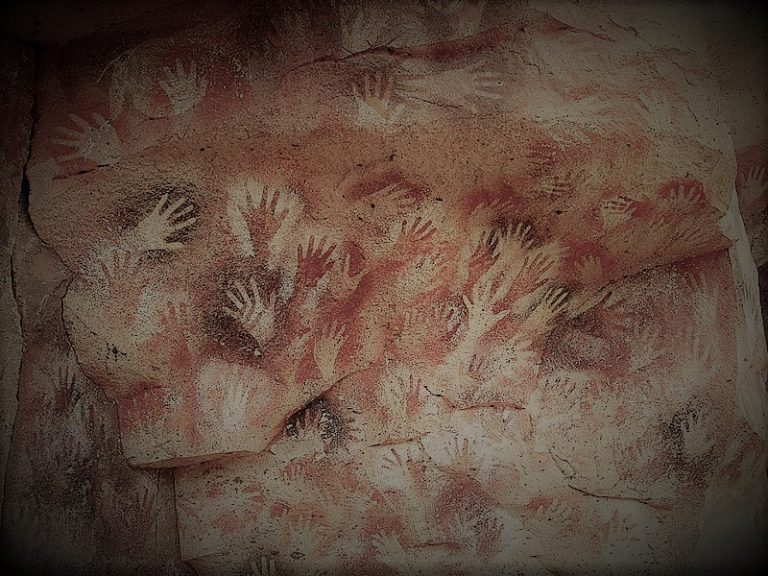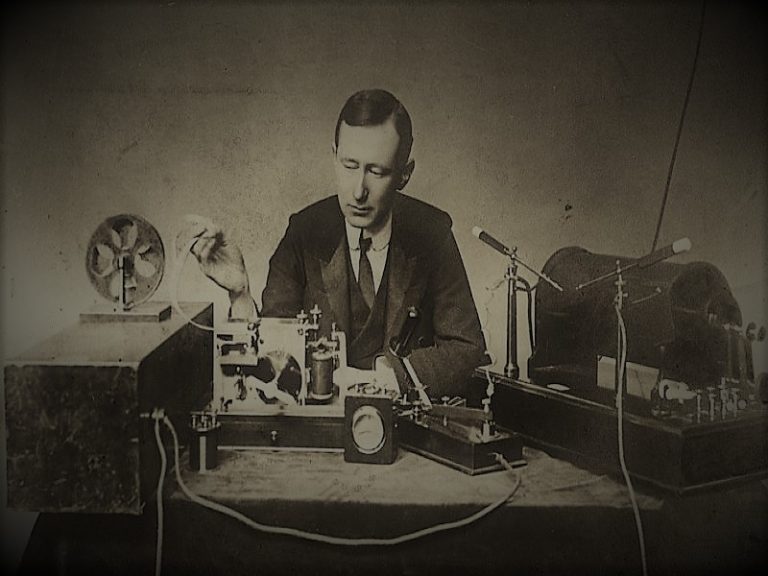

By Grahame Johnstone
Introduction
The invention of writing and in particular of alphabetic writing marked a milestone in cultural development. It provided humanity with a new means of communication that literally inscribed in stone the spoken word. Communication could now span both space and time. Space, because writing could be sent from one place to another. Time, because writing could preserve the words for generations to come.
Since the art of writing was discovered, nearly every form of writing material has been used. Some were intended to ensure permanence while others were simple and inexpensive but temporary. From the wax notepad of the schoolboy to the grand inscriptions on monuments, almost everything we know about antiquity is derived from writings such as those written on animals, vegetables and minerals.
Stone

Stone was mainly used for writing on permanent monuments and public buildings. The writing on stone usually requires the use of hammer and chisel. The most comfortable, accurate and hence productive manner of carving stone inscriptions is to hold the chisel in one hand and hit it with the hammer held in the other hand. Although this sounds like too simple an explanation, one must consider that as most people are right handed then there would be a tendency to cut the letters from right to left. Therefore, we find that the flow of ancient Semitic languages such as Hebrew and Arabic run from right to left. Stone is one of the oldest forms of writing material.
Metal

Sheets of metal were rarely used for writing or are rarely found. For one, they were expensive to manufacture and secondly, the metal was often re-smelted for use as weapons in times of war, so few sheets remain. Royal houses sometimes used silver or gold and examples of writing on gold has been excavated from the Second Temple period in Jerusalem. More commonly, bronze tablets and copper sheets were used to provide semi-permanence and could be stored more easily than cumbersome rock. Archaeologists have discovered row upon row of bronze tablets from ancient Roman archives that contain details about treaties and decrees.
Soldiers, honourably discharged from serving in the Roman Army, were given a small bronze tablet with their right as citizen recorded on it. These were known as diplomas and we derive modern academic graduation from this source.
Wood
The use of wood as a writing medium was strictly confined to temporary purposes and not many such tablets have survived through antiquity, as the climate in most countries is not conducive to their preservation. Apart from some well-preserved palm wood found in Buddhist libraries in the East, the only good source of timber tablets is in the dry sands of Egypt, where the flooding Nile cannot reach.
In antiquity, wooden boards were used for displaying public announcements. The Romans called them albums. They were whitened boards that could be sign written and when the message became out of date the board could easily be whitewashed and rewritten. The qualities of slaves would be written on such boards and they would be made to stand under them while being paraded for sale.
Wax

An extremely temporary method of writing was to scratch the record onto wax tablets. These were thin wooden boards covered with a fine coating of beeswax. The boards could have small holes at one end that permitted a ring to be inserted allowing many sheets to form a flip book. The Latin name for this was codex and has become common in referring to any group of bound pages.
Wax pads were often used as notebooks. At Pompeii, excavations have shown that even contracts as important as banking or loans were recorded on wax tablets. This may have been a quick, temporary method prior to a more permanent one, much like a secretary might make shorthand notes before typing them up.
School students used the wax tablet as a writing notepad. Once the information was learned the tablet could be smoothed clean for reuse. The wax was written on using a sharp stylus, whereby we get the term literary style. A stylus was sharp at one end and broad at the other for smoothing out the wax when required. Pads of two or three leaves were called diptychs or triptychs.
Ostraca

These are broken sherds of pottery that have writing scratched onto them. Being basically useless, potsherds were discarded. However, as they were made of fired clay they were very hard and almost indestructible. Sherds were a good source of writing material but it is certain that they were never intended to be a lasting, permanent record. What was probably meant to be only a provisional material has, for the archaeologist, survived well in all sites in nearly all countries and is a valuable artefact.
Commonly found in Egypt, as tax receipts, there have been tens of thousands located all over the world.
Writing Materials Developed
The ingenuity of humans to record their successes, others’ failures and even the most mundane of business exchanges can all be found in the archaeological record. Ancient writing was on primitive materials but as writing developed so too technology followed with fired clay tablets, papyrus and parchment.
As written forms of language slowly developed the materials upon which the text was applied also changed to become more user friendly. Early writing materials consisted of stone, metal sheets, wooden boards, wax tablets and ostraca. All of these materials are rigid and rather primitive in kind. As the need for better communication and recording occurred so too developed better forms of writing materials.
Clay Tablets

Clay tablets are probably the invention of the Sumerians of southern Babylonia. The use of soft clay tablets was popular right up until the Christian Era. Use of clay tablets became widespread and was the general means of written communication throughout Mesopotamia and the entire ancient East.
The system of use involved two parts: The tablet proper, that was fashioned as a ‘letter’ and formed the inner core of the communication. Shrouding the inner tablet was a folded clay ‘envelope’ that completely enclosed the inner tablet. The message to be sent was first written on the smaller, inner tablet, while the clay was soft using a thin, sharpened tool to inscribe wedge-shaped cuneiform letters that comprised the text. This tablet was then fired to harden it and make the message permanent.
It was then wrapped in a thin sheet of clay that was folded around the main message like a modern envelope. This was inscribed with the name of the recipient, the contents of the inner tablet and the name (and possibly the seal) of the author.
These tablets have been excavated by the thousand, from archaeological sites all over the East. There are at least one million tablets held and displayed in various museums throughout the world.
The envelope system provided privacy to the writer and if the seal had not been broken, the recipient would know that no one had read his mail.
Papyrus

Another of the vegetable writing materials is papyrus. Apparently invented in Egypt, where long papyrus reeds grow along the banks of the Nile River, especially in the Nile Delta region. This versatile plant was also used as a fuel, food, medicine, for clothing and for rope manufacture.
The thick reeds where peeled of their outer layer and then cut into flat strips. The strips were laid out on boards in a criss-cross weaving pattern and gently beaten with a wooden mallet. The result, after drying, was a very strong, flat writing surface that could be rolled up. Not only was it a versatile writing material it was also very light.
Large sheets could be manufactured and after polishing each piece with pumice stone, it was ready for the scribe. The longer the text of the message then the longer the papyrus page could be made. Papyri many metres long have been discovered. The average length of a religious or business roll is about ten metres although some are known to have been up to 40 metres long.
For storage they were rolled to form scrolls. For practical purposes a long scroll was somewhat inconvenient. To be read, a scroll had to be unrolled with one hand while the other hand then re-rolled it causing only a small portion to be seen at any one time. Because of this awkwardness, scroll length became standardised.
Standard sizes meant that long works, such as Homer’s Iliad and Odyssey, needed 24 scrolls to accommodate them resulting in the division into 24 books. Similarly, the books of the bible have been shaped by prescribed scroll sizes. Long books such as Samuel and Kings needed to be divided into two parts while short books, like the 12 minor prophets could be combined onto one single scroll.
Writing was achieved by using pen and ink. The pen was a slit reed and the ink was a mixture of lamp soot with gum and water. This combination was highly durable as evidenced by the survival of thousands of fragments of written text. The papyri itself was the weakness of the system. The ink had tremendous longevity but fire, dampness and insects easily destroyed the organic papyrus.
Archaeologists have found documents written on papyrus, rolled up, tied with string and sealed with a clay stamp on which the mark of the authority was impressed. More than often the clay seal is found but the valuable document that it held has deteriorated and been lost.
Parchment

The chief rival of Egyptian papyri as a writing material was a surface made from animal skins known as parchment. Writing on animal skins was known to be widespread in the Assyrian period. The oldest known animal skin scroll is said to be that of the Egyptian 12th Dynasty.
Parchment is basically leather. Both begin using the same treatment process, with the two just having a different ending. Skins are washed, soaked, cleaned of hair and residual flesh and carefully smoothed out. To create leather the skins are then treated with tannin, hence the term, tanning. For parchment, the skins are not tanned but dressed with alum and dusted off with fine chalk. The thinner hides of goats and sheep are preferably used for parchment over the thicker hides of bulls. Young animals produced the finest parchment and this is often referred to as vellum.
The dating of the Hebrew manuscript on parchment found at Muraba’at, near the Dead Sea, was attested to 750 BC. Parchment appears to have become the normal writing material from this time on for permanent records while administrative matters were still recorded on papyrus.
Parchment is much more durable than papyrus and can withstand hard wear and usage. Papyrus rolls were easily torn or damaged by fire (remember that reading at night was with a naked flame) and many had to be rewritten or copied.
Unlike papyrus, parchment had a reverse side that was not so suitable for writing. It was the hair or wool side that had been scrapped but could never be made as smooth nor as white as the face side. For this reason the good surface became the inner face of the roll and the outer was used only as decorative surface of a scroll.
Recording the Past
Almost all ancient classical literature was written on parchment. However, the development of writing materials through ancient times is as fascinating as it is exhaustive. Millions of pieces of ancient communication have helped to record the past. With hundreds of archaeological excavations operating today it is certain that millions more will be discovered and re-read.
Originally published by Archaeology Expert, 01.28.2016 and 09.27.2017, republished with permission for non-commercial, educational purposes.


